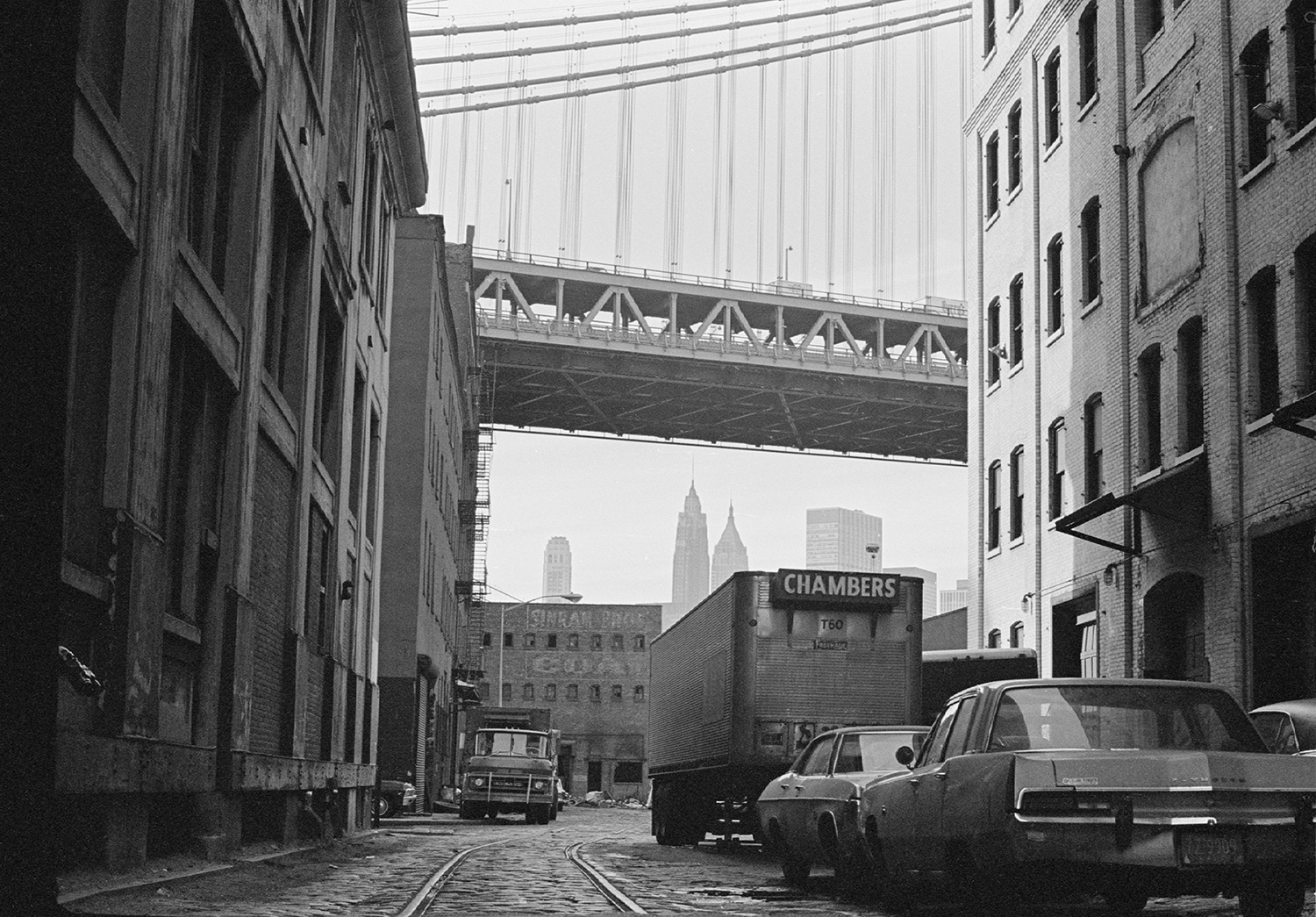Photos that capture the real Brooklyn kids of the ’60s
- Text by Miss Rosen
- Photography by Constance Hansen / Guzman

In the wake of riots that began after the United States government ordered the assassination of Dr. Martin Luther King, Jr., Daniel Patrick Moynihan, an urban affairs adviser to President Nixon, introduced a policy called “benign neglect” that would change the course of American history. The policy proposed systemic denial of basic government services to African-American and Latinx neighbourhoods across the nation, resulting in a massive collapse that decimated the people for well over a decade.
The Clinton Hill section of Brooklyn, home to the Pratt Institute, was one such neighbourhood to fall into disrepair. Yet from the destruction, a new culture was coming to bear.
Constance Hansen, one half the husband-and-wife team of Guzman, has just unearthed photographs of this pivotal era taken while she was a student at the Pratt Institute from 1969- 1971. “There was a whole other thing going on then,” she remembers.
“The 60s vibe, the music, the Vietnam War, Civil Rights – everything was exploding. It was anarchistic. You just did your thing. There were a lot of artists, writers, poets, and people creating, very free and they were all deep in their work. I would be floating through and taking pictures.”

Artists at work, Fort Greene Brooklyn

Feral cats, my place. Late 60’s Fort Greene Brooklyn
Hansen had initially enrolled in Pratt as a sculpture major, but immediately fell in love with photography. “I knew this was my form and this is what I wanted to do forever. Photography became a diary and a visual way of describing my world. I wasn’t looking in – I was just in it,” she recalls.
Living in a $35-a-month apartment on Clermont Avenue, Hansen began to find her way. “We were all scraping by. The door had a padlock. There was no gas in the stove and we didn’t always have heat. We had a darkroom in the attic that didn’t have running water. We didn’t have phones – no one could afford them.”

Cutty Sark

Dumbo, late 60’s
“We were making do and wandering around. There were a lot of artists in the building: a filmmaker, an architecture student who was taking the walls apart. Everyone was sharing what they were doing.”
The photographs Hansen took capture the spirit of the times, when students felt completely free to experiment and liberate themselves from all constructs. At the same time, things were rough: people turned up murdered, went underground, overdosed, or went to jail. “It was rough around the edges and some people didn’t make it out,” Hansen reveals. “I feel like I was very lucky and blessed to have that experience and time in my life when it was just so free.”

Crochet girl’s bedroom, late 60’s

Police activity, brooklyn late 60’s

Female gaze, late 60’s

Missing teeth trouble. My place, Fort Greene Brooklyn, late 60’s

Landlord, Clermont Ave, Brooklyn 60’s

Artists life, Fort Greene brooklyn

Kids watching building burn, late 60’s
Follow Miss Rosen on Twitter.
Enjoyed this article? Like Huck on Facebook or follow us on Twitter.
Latest on Huck

Is the UK ready for a Kabaddi boom?
Kabaddi, Kabaddi, Kabaddi — Watched by over 280 million in India, the breathless contact sport has repeatedly tried to grip British viewers. Ahead of the Kabaddi World Cup being held in Wolverhampton this month, Kyle MacNeill speaks to the gamechangers laying the groundwork for a grassroots scene.
Written by: Kyle MacNeill

One photographer’s search for her long lost father
Decades apart — Moving to Southern California as a young child, Diana Markosian’s family was torn apart. Finding him years later, her new photobook explores grief, loss and connection.
Written by: Miss Rosen

As DOGE stutters, all that remains is cringe
Department of Gargantuan Egos — With tensions splintering the American right and contemporary rap’s biggest feud continuing to make headlines, newsletter columnist Emma Garland explains how fragile male egos stand at the core of it all.
Written by: Emma Garland

Photo essay special: Despite pre-Carnival anxiety, Mardi Gras 2025 was a joyous release for New Orleans
A city celebrates — Following a horrific New Year’s Day terror attack and forecasts for extreme weather, the Louisiana city’s marquee celebration was pre-marked with doubt. But the festival found a city in a jubilant mood, with TBow Bowden there to capture it.
Written by: Isaac Muk

From his skating past to sculpting present, Arran Gregory revels in the organic
Sensing Earth Space — Having risen to prominence as an affiliate of Wayward Gallery and Slam City Skates, the shredder turned artist creates unique, temporal pieces out of earthly materials. Dorrell Merritt caught up with him to find out more about his creative process.
Written by: Dorrell Merritt

In Bristol, pub singers are keeping an age-old tradition alive
Ballads, backing tracks, beers — Bar closures, karaoke and jukeboxes have eroded a form of live music that was once an evening staple, but on the fringes of the southwest’s biggest city, a committed circuit remains.
Written by: Fred Dodgson